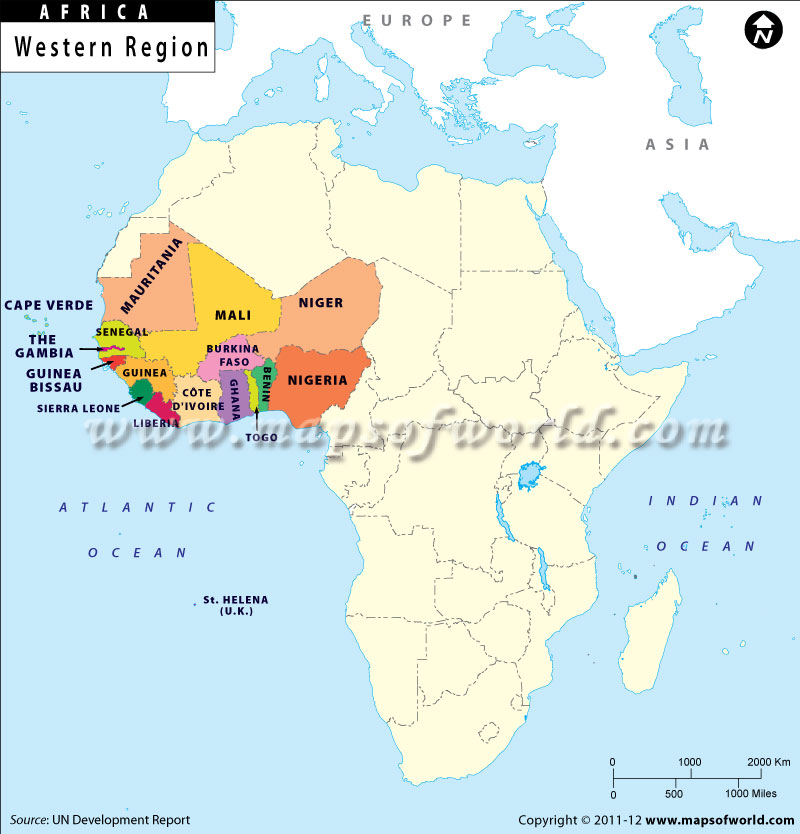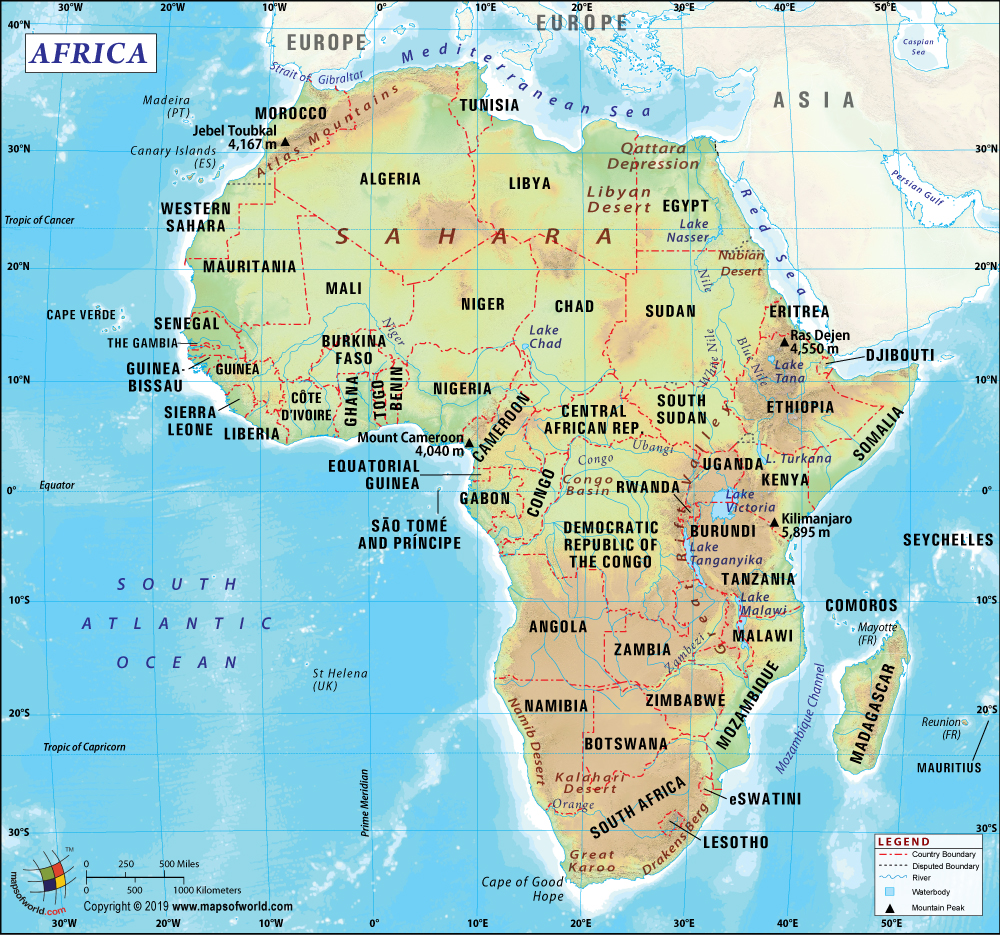What are the Key Facts of Niger?

|
Official Name |
Republic of the Niger |
|
Continent |
Africa |
|
Capital |
Niamey |
|
Largest City |
Niamey |
|
Coordinates |
16.000000, 8.000000 |
|
Area |
489,000 sq. mi ( 1,267,000 sq. km) |
|
Land Boundaries |
3,625 mi ( 5,834 km) |
|
Coastline |
0 mi ( 0 km) landlocked |
|
Currency |
West African CFA franc (XOF) |
|
Neighboring Countries |
Chad, Nigeria, Benin, Burkina Faso, Mali, Algeria, Libya |
|
Population |
22,443,000 (2018 est.) |
|
Official Languages |
French |
|
Major Religion |
Islam |
|
National Day |
18 December (Republic Day) |
|
National Anthem |
“La Nigerienne” |
|
Form of Government |
Unitary semi-presidential republic |
|
President |
Mahamadou Issoufou |
|
Prime Minister |
Brigi Rafini |
|
GDP per capita (PPP) |
$ 1,048.5 (World Bank, 2018) |
|
GDP per capita (nominal) |
$ 411.7 (World Bank, 2018) |
|
HDI |
0.354 (2017), Rank: 189 |
|
Literacy Rate |
NA |
|
Space Agency |
NA |
|
Military Expenditure Ranking |
110 (SIPRI, 2017) |
|
No. of Olympic Medals |
2 (as of 2018) |
|
Driving Side |
right |
|
Calling Code |
+227 |
|
Time Zone |
UTC+1 (WAT) |
|
Internet TLD |
.ne |
Where is Niger?
Niger is a West African country located in the southeast of Algeria. It shares its border with Algeria to the northwest, Mali and Burkina Faso to the west, Benin to the southwest, Nigeria to the south, Chad to the east, and Libya to the northeast.
Flag of Niger
The Niger Flag is a tricolour flag comprising of three horizontal stripes of orange, white and green respectively from the top downwards. In the middle of the white strip, there is an orange disc.
What is the Geography of Niger?
Niger is spread across a total area of 1,267,000 sq. km (489,000 sq. mi), out of which 1,266,700 sq. km (489,075 sq. mi) land area and 300 sq. km (116 sq. mi) is water area. It has a 5,834 km (3,625 mi) long land boundary and no coastline (because it is landlocked).
Here is Niger Physical Map showing all physical features of the country.
The land boundary is shared with seven countries: Nigeria (1,608 km or 999), Chad (1,196 km or 743 mi), Algeria (951 km or 591 mi), Mali (838 km or 521 mi), Burkina Faso (622 km or 386 mi), Libya (342 km or 213 mi), and Benin (277 km or 172 mi).
The terrain of Niger mainly consists of desert plains as well as sand dunes. While flat to rolling plains are situated in the south, hills are located in the north. The country has an average elevation of 474 m (1,555 ft).
While Idoukal-n-Taghes (located in the south-central region of the Air Mountains) is the highest elevation point of Niger at 2,022 m (6,634 ft), the Niger River (on which the country is named after) at 200 m (656 ft) is the lowest elevation point. Other major mountains in Niger are Oumougueni, Greboun, Adrar Tchirelissene, Todgha, Agareroum, etc.
Niger, a landlocked country in West Africa, is situated along the border of Saharan and Sub-Saharan regions. The landscape is dominated by both the Sahel and Sahara Deserts. The major landforms are deserts, uplands, dunes, and hills. Forests and woodlands cover around 2 per cent of the lower part of Niger.
The Niger River, the most important river of the country and the third-longest river in Africa, flows in a crescent from the densely forested mountainous plateau of Guinea Highlands through Mali. This river also makes up a part of the border between Benin and Niger.
Other major rivers are Mékrou River, Yobe River, Dallol Bosso, Béli River (Gorouol River), Sirba River, Tapoa River, etc. The Air Mountains, located in the northern part ofthis country, along with a series of nine massifs punctuate the Sahara desert.
Niger has three distinct climatic zones. One of the zones is called the Saharan desert that is located in the northern part of the country. The second climatic zone is found in the Sahel, to the southern part of the desert. The third one is the Sudan climate in the southwest corner of the country.
The Saharan climatic zone gets intense heat, which causes the scant rainfall to evaporate before even hitting the ground. The annual rainfall in Bilma, located in the eastern part of Niger, gets just 2 cm (0.79 in) of rain.
The annual rainfall amount is around 25 cm (10 in) on average in the Aïr Massif. Most of the rainfall here takes place for two months. The extent of average annual rainfall is around 16.5 cm (6.5 in) in Agadez.
The southern part of Niger gets more rainfall annually. In the Sudanese climatic zone (especially at Gaya), the average rainfall is around 87 cm (34 in). In the southern Sahel climatic zone (especially at Niamey), the average rainfall level is 56 cm (22 in). May-October is the rainy season in here and most of the rainfall takes place in July and August.
The average maximum daily temperature at Niamey varies throughout the year, from 31 °C (88 °F) in August to 41 °C (106 °F) in April. During November-February, the nights remain cool, and the temperature stays below 20 °C (68 °F). The months from December-to-mid-February is the best time to visit Niger.
What is the Economy of Niger?
Niger is a backward economy, whose main economic activities are subsistence agriculture and rearing livestock. More than 80% of the total population is involved in agriculture. Over 40% of the GDP is contributed by agriculture. The nominal GDP increased by 6.5% in 2018 (higher than 4.9% in 2017) to reach a GDP figure of $9,299 million.
The total value of export and import of Niger in 2017 was US$602 million and imported US$931 million respectively. The country had a negative balance of trade of US$328 million. Some of the significant items exported are refined petroleum, radioactive chemicals, petroleum gas, gold and other oily seeds. The major import items of Niger are rice, pesticides, cement, palm oil and packaged medicaments.
The unemployment rate was 0.27% in 2018, which declined by 0.01% from 0.29% in 2017. During 1994-2014, the rate of poverty (defined by US$1.90 a day at 2011 international prices) declined from 81.4% to 44.5%.
What is the Transportation System of Niger?
There are three main transportation systems available in Niger, and they are airways, roadways, and waterways. Niger has 30 airports, out of which ten have paved runways, and 20 have unpaved runways. Some of the major airports of the country are Diori Hamani International Airport (in Niamey), Mano Dayak International Airport (in Agadez), Maradi Airport (in Maradi), Tahoua Airport (in Tahoua) and Zinder Airport (in Zinder). The country also has a heliport.
The Republic of the Niger has 18,949 km (11,774 mi) long roadway. While 3,912 km (2,431 mi) is paved, 15,037 km (9,344 mi) is unpaved. Over 300 km (186 mi) of the waterway is available in the country. The most prominent waterway is the Niger River, which remains navigable to Gaya from September to March. Only one merchant marine vessel is present in Niger.
What International Organizations is Niger part of?
WTO, UN, UNESCO, WHO, NAM, ACP, AfDB, AU, CD, ECOWAS, Entente, FAO, FZ, G-77, IAEA, IBRD, ICAO, ICCt, ICRM, IDA, IDB, IFAD, IFC, IFRCS, ILO, IMF, Interpol, IOC, IOM, IPU, ITSO, ITU, MIGA, MINUSMA, MONUSCO, OIC, OIF, OPCW, UNCTAD, UNIDO, UNMIL, UNOCI, UNWTO, UPU, WAEMU, WCO, WIPO, WMO, EITI (compliant country), ISO (correspondent), ITUC (NGOs), WADB (regional), WFTU (NGOs)
Related Maps:



